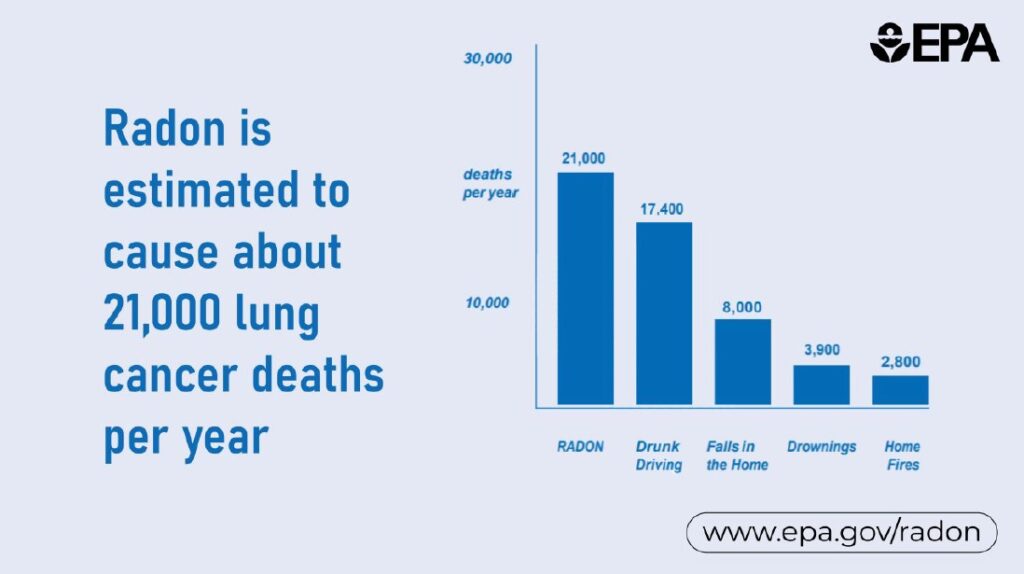The Clark County Combined Health District houses an Indoor Air Quality Program in order to educate the public and promote healthy indoor atmospheres. This involves the smoke-free workplace program, the school environmental health and safety program, and the asthma program.
The Clark County Health District provides FREE consultation services and FREE onsite Indoor Air Quality Assessments for homes and businesses for the following indoor health concerns:
- Mold and breathing problems
- Heating and ventilation problems
- Temperature and humidity problems
- Asthma and allergy triggers
- Secondhand tobacco smoke
- And more
If you suspect that you have health issues related to the quality of your indoor air, you can call the CCCHD to discuss at 937-390-5600 ext. 245 or you can arrange a FREE indoor air quality assessment by e-mailing environmental@ccchd.com
For Physicians: Is your patient struggling with asthma?
Asthma can be a difficult diagnosis to manage, and can be responsible for an increase in emergency room visits. As you know, asthma can be worsened by triggers within the patient’s home, such as dust mites, mold spores, pet dander, pests, air fresheners, and secondhand tobacco smoke.
You can arrange a FREE indoor air quality assessment of your patient’s home to identify possible asthma triggers. Call 937-390-5600 ext 245 or email environmental@ccchd.com.
For more information on asthma, visit:
Asthma Care Quick Reference – U.S. Department of Health and Human Services
Dayton Children’s Hospital Asthma Care Program Patient Driven Protocol
For Patients and Parents: Are you or your child struggling with asthma?
Asthma is a serious health issue responsible for missed school days, increased emergency room visits, and other health problems. Asthma can be made worse by triggers within the home, such as dust mites, pet dander, pests, and secondhand tobacco smoke.
If you are struggling with asthma or if you are a parent with a child who is struggling with asthma, you can arrange a FREE indoor air quality assessment of your home to identify possible asthma triggers. Call 937-390-5600 ext 245 or email environmental@ccchd.com.
For more information on asthma, visit the Ohio Department of Health.
Radon is a cancer-causing radioactive gas.
You can’t see, smell, taste or feel radon. But it may still be a problem in your home. When you breathe air containing radon, you increase your risk of getting lung cancer. In fact, the Surgeon General of the United States has warned that radon is the second leading cause of lung cancer in the United States today.



Radon is a decay product of uranium deposits found naturally in the ground. The amount and depth of the uranium varies widely from area to area.
Radon levels are affected by many factors including the amount of uranium and type of soil below your home, weather conditions, and construction of your home.
Just because your neighbor’s home tested at a certain level does not mean your home will test the same. TESTING IS THE ONLY WAY TO DETERMINE THE LEVEL OF RADON IN YOUR HOME.
Testing is easy! For a FREE radon test kit and analysis, call 1-800-247-2435 or Click Here.
We recommend that everyone who conducts their own test read A Citizen’s Guide to Radon, The guide to protecting yourself and your family from radon.
If you find that you have high radon levels, there are ways to fix a radon problem. Even very high levels can be reduced to acceptable levels. Also, if you are planning to build a new home, radon resistance can be built into your home affordably.
Check out Consumer’s Guide to Radon Reduction: How to Reduce Radon Levels in Your Home and/or Building Radon Out: A Step-by-Step Guide on How to Build Radon-Resistant Homes.
Insist that your contractor build radon resistance into your home.
You may find that fixing a radon problem is better performed by a professional who is trained to perform radon mitigation. Anyone hired to correct a radon problem must be licensed.
There are exceptions for homeowners testing or fixing their own home, or a school employee testing a school in the district in which the employee works. Radon Testing and Mitigation licenses are issued by the Ohio Department of Health. To find a licensed radon professional, click here.
Before making a final decision with a contractor, call the Ohio Department of Health Radon Licensing at (614) 728-0272 or e-mail indoor.radon@odh.ohio.gov and ask the specific question, “Are there any complaints against this contractor?”.
The amount of risk is a factor of the level of radon and the time exposed. While most people tend to spend the majority of their time at home, work and school account for a large part of time, too. As with homes, it is recommended that these structures be tested and corrected if elevated levels of radon are detected.
Regional Air Pollution Control Agency (RAPCA)
The Regional Air Pollution Control Agency (RAPCA) serves six different counties in Ohio and operates within each county’s health department. RAPCA’s mission centers on protecting citizens of the Miami Valley from the adverse health and welfare impacts of air pollution.
Click here for real-time air quality information
In keeping up with air quality regulations, any person who owns and/or operates a facility containing one or more sources of air contaminant emissions shall pay an annual fee based on the facility status of the previous calendar year. Annual fees shall be invoiced and paid annually. Retest fees for emissions tests conducted at facilities or GDFs are billed following the successful completion of the testing program. All fees are due within 30 days o f receipt of invoice.
In the event a facility is shutdown, idled, the facility status changes, or the fee would cause undue hardship, adjustments may be made at the discretion of the RAPCA Administrator. Any such reduction or waiver of the fee requirement shall be reviewed annually.
